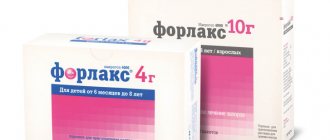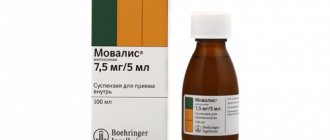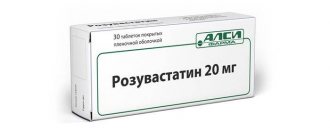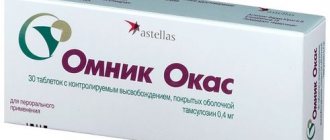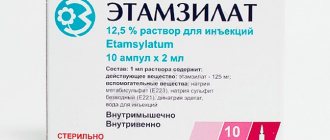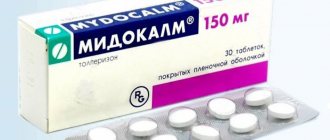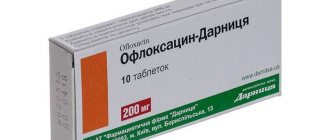Amoxicillin is a broad-spectrum antibacterial drug. It is sold at a very affordable price and is perfect for representatives of different age groups. These features and the ability to inhibit pathogens at the cellular level make the drug one of the most popular and frequently used in recent times.
Domestic analogues of Amoxicilcin
The following Russian analogues of Amoxicillin are presented on the domestic market: Amosin, Ecobol, Amoxisar and many other drugs of the Penicillin group.
Amosin
Amosin is a semi-synthetic antibiotic produced by Sintez OJSC. Affects gram-positive and gram-negative microorganisms. Amoxicillin in the composition inhibits the production of substances vital for bacteria, which leads to their death due to the destruction of cell membranes.
Medicine release form:
- Powders for the preparation of suspensions. Usually prescribed for the treatment of children. Preparation: for one serving of powder, take two servings of boiled water at room temperature (for 125 mg of powder - 2.5 ml of water, for 250 mg - 5 ml) and mix until smooth. The dosage regimen depends on the patient's age and type of disease;
- Capsules. Take before or after meals. They are highly effective, since the absorption of the active substance occurs directly in the intestine;
- Pills. Take, regardless of meals, at regular intervals three times a day. The daily dose is 500 mg of amoxicillin for patients weighing more than 40 kg.
After internal administration, the active component of Amoxin, amoxicillin, is 93% absorbed by the body. Within an hour, the concentration of amoxicillin reaches the maximum level in the blood. The higher the dose, the higher the concentration of drugs in the plasma.
The half-life of Amoxicillin in an adult is 1.5 hours. Approximately 70% of the drug is excreted in the urine and about 20% in the bile.
Ecoball
The main active substance is amoxicillin. Additional components in the composition include lactulose, starch, povidone. Thanks to lactulose, the damaging effect of the antibiotic on the body is reduced to a minimum, since the substance stimulates the growth of bifidobacteria, as well as the production of organic acids that suppress the development of pathogenic microorganisms in the intestines.
Dosing of the analogue is three times a day: adults and children over 10 years old, with a body weight of at least 40 kg, one 500 mg tablet.
For the treatment of severe forms of disease, the dose of Amoxicillin is increased to 1 g three times a day. For gonorrhea, take 3 g of Ecobol tablets once.
The main pharmacokinetic parameters of the drug do not differ from other analogues of Amoxicillin.
Amoxicar
The analogue is recommended for use by adults and children, including newborns. The dosage of Amoxicillin is determined by the doctor, taking into account the age and weight of the patient, as well as the type and complexity of the disease.
Amoxicar is contraindicated during pregnancy and breastfeeding, renal failure and if the patient is hypersensitive to penicillin.
The effectiveness of antibiotics for prostatitis
Amoxicillin can be prescribed for inflammation of the prostate gland of a bacterial nature. Doctors usually prescribe 250-500 mg of medication three times a day.
In severe cases, the single dose is increased to 1 g. The tablets are taken without chewing, before or after meals. The course of treatment can range from 5 days to 2 weeks (sometimes more).
The effect of the drug begins half an hour after administration and lasts up to 8 hours.
As a rule, an antibiotic is part of a complex therapy along with painkillers, NSAIDs, immunostimulants and vitamin complexes to relieve symptoms and maintain the body's protective function.
Side effects
If the drug is taken incorrectly, side effects may occur. The most common side effects from antibiotics are various allergic reactions. They can occur as a skin rash, in the form of rhinitis, Quincke's edema, or even anaphylactic shock. Less common reactions include dizziness and muscle spasms. The same effects may occur with prolonged use of the drug. The antibiotic should not be given to the child for longer than the doctor prescribed.
In addition to allergic reactions, the child may have problems with the digestive system. Common manifestations include conditions such as nausea and gag reflexes. There is a violation of taste sensations. Diarrhea may occur. Also, side effects from taking an antibiotic incorrectly include insomnia, a state of agitation, anxiety, depression, and headaches may appear.
Side effects and overdose
While taking the medicine, the patient may experience unwanted reactions from the body. Among the side effects of the drug:
- Allergic manifestations: urticaria, erythrema, rhinitis, conjunctivitis, Quincke's edema, sometimes joint pain, fever appear, the content of eosinophils in the blood increases, in very rare cases anaphylactic shock develops.
- Progression of superinfection in people with chronic pathologies and reduced immunity.
- Long-term use of antibiotics in large doses can cause dizziness, impaired consciousness, ataxia, convulsions, and depression.
- When paired with Metronidazole, Amoxicillin can cause nausea and vomiting, diarrhea or constipation, stomach pain, colitis, inflammation of the tongue, stomatitis, interstitial nephritis, hepatitis, hematopoietic disorders, and anorexia.
- With clavulanic acid, an antibacterial agent can lead to jaundice, hepatitis; rarely - epidermal necrolysis, dermatitis and erythrema multiforme.
Overdose symptoms
As a rule, amoxicillin, even at high dosages, does not have a pronounced toxic effect.
If the therapeutic concentration of a substance is exceeded, the following may occur:
- stomach pain,
- intestinal disorder,
- water and electrolyte imbalance.
If there are pathologies in the form of renal failure or other diseases of these organs, signs of nephrotoxicity (kidney damage) and stone formation may appear.
In case of overdose, it is recommended to take activated carbon or another adsorbent and contact a specialist. The doctor will prescribe symptomatic treatment; if urgently necessary, dialysis is performed. There is no specific antidote.
Imported analogues
The list of Amoxicillin-based analogues produced by foreign manufacturers includes not only products with one type of active substance, but also combined ones.
The additional inclusion of clavulanic acid in the composition of the analog allows to increase its effectiveness. This substance inhibits the development of bacterial resistance to antibiotics.
The cost of foreign analogues of Amoxicillin is usually higher than domestic medicines.
Amoxicillin Sandoz
Amoxicillin Sandoz tablets are an imported analogue of Amoxicillin, produced by the Austrian pharmaceutical company Sandoz. Gmbh. The drug is available in the form of film-coated tablets, 500 mg and 1 g.
The feasibility of using an analogue is determined by the geographic level of prevalence of resistant strains.
The degree of absolute bioavailability of the analogue depends on the dose taken and can be up to 90%. Increasing the dose of Amoxicillin affects its absorption. The active substance reaches its maximum concentration in the blood 1.5-2 hours after administration. Approximately 80% of the drug is excreted through the kidneys.
Standard daily intake of analogue:
- for adults - 750 mg-3 g;
- The dose for children under 12 years of age weighing less than 40 kg should be 25-60 mg/kg body weight per day, this total dose is divided into 2-3 doses.
Amoxicillin Sandoz is also used to prevent endocarditis.
Flemoxin Solutab
Flemoxin Solutab tablets are a relatively expensive analogue of Amoxicillin, produced by the Dutch manufacturer Astellas Pharma Europe B.v. Belongs to the group of beta-lactam antibiotics that suppress the development of bacterial resistance. The pharmacological effect of the analogue drug is provided by two active substances - amoxicillin and clavulanic acid.
Thanks to the combination of two active components, the medicine is highly effective:
- inhibition of the synthesis of peptidoglycan, an important component of bacterial cell walls. Destruction of peptide chains leads to the death of pathogenic bacteria;
- suppression of β-lactamases - enzymes produced by bacteria to resist and develop resistance to antibiotics. Thus, the overall enzymatic progress of amoxicillin increases and the range of its effects expands.
The maximum concentration in plasma of the active substances is reached within 1-2 hours. The analogue is withdrawn within 6 hours after administration.
The dosage of the medicine is determined by the doctor, taking into account the age and weight of the patient, as well as the type of infection and its severity.
special instructions
The drug Amoxicillin is often used in complex therapies, however, there are several drugs with which it is better not to include it in the same treatment regimen. These include:
- Laxatives, glucosamines, aminoglycosides. Combined use may reduce the absorption of the antibiotic.
- Ascorbic acid in combination with Amoxicillin accelerates metabolic processes.
- Blockers of tubular secretion provoke an increase in the main active component of the drug in the blood.
- When taking Methotrexate with Amoxicillin, the toxic properties of the first drug increase.
- Adding Metronidazole is fraught with the development of dyspeptic complications.
- Anticoagulants . Simultaneous use with Amoxicillin is strictly contraindicated, as it is fraught with an increase in prothrombin time.
- Despite the fact that clavulanic acid increases the antibacterial properties of this drug, their combined use is considered undesirable, as it can cause serious side effects such as cholestatic jaundice and hepatitis.
- Probenecid , combined use with which leads to a significant increase in the concentration of the active substances of the antibiotic in the blood and a slowdown in its elimination from the patient’s body.
Typically, the concentration of the drug in the blood reaches its peak within the first two hours after administration, distributed in all tissues and systems of the body, while a significant part of Amoxicillin is localized in the liver. In children and patients suffering from renal failure, withdrawal of the antibiotic can last from 7 to 20 hours. At least 60 percent of Amoxicillin is excreted in the urine, and a very small part of it is excreted in the feces.
Those who are interested in the compatibility of the drug with alcohol should know that the simultaneous use of Amoxicillin and alcoholic beverages is strictly contraindicated. The consequences of failure to comply with this instruction can be disastrous, because in addition to the development of an acute allergic reaction, such severe complications as a stroke and even complete cessation of breathing are possible.
Mechanism of action
Amoxicillin is an acid-resistant, broad-spectrum antibacterial agent. Thanks to this, it affects both gram-positive and gram-negative microorganisms. It is also active against microorganisms that have shown sensitivity to penicillin G. These include streptococci and staphylococci that do not produce penicillinase.
The medicine is not destroyed by gastric juice and is completely absorbed from the digestive tract. The maximum amount in plasma is reached after approximately 1-2 hours. The binding of the active component to plasma proteins is 20%. The drug is distributed throughout all tissues and fluids of the body.
Amoxicillin clavulanic acid Amoxiclav
There is a drug in which amoxicillin is combined with clavulanic acid. This drug is called amoxicillin clavulanate
, or
Amoxiclav
, or
Augmentin
.
We remember that amoxicillin is not stable enough in the human body due to the action of the penicillinase enzyme. Clavulanic acid has the property of blocking this enzyme, so amoxicillin is not destroyed and acts on harmful bacteria longer than usual. Amoxiclav is rightfully considered a stronger drug than amoxicillin. Indications for use of Amoxiclav:
- Bacterial infections of the lower respiratory tract (pneumonia, bronchitis, lung abscess, pleural empyema).
- Infections of the ear, nose and throat (otitis, tonsillitis, tonsillitis, sinusitis, frontal sinusitis).
- Infections of the urinary and genital organs (pyelonephritis, pyelitis, prostatitis, salpingitis, ovarian abscess, endometritis, postpartum sepsis, septic abortion, gonorrhea, chancroid, etc.).
- Skin and soft tissue infections (abscess, cellulitis, erysipelas, infected wounds).
- Osteomyelitis.
- Postoperative infections and their prevention.
Amoxiclav release forms:1.
Tablets of 375 mg and 625 mg (amoxicillin content is indicated in mg).
2.
Powder for preparing a suspension with a drug concentration of 156 mg/5 ml and 312 mg/5 ml.
3.
Powder for inhalation 600 mg per package, and 1.2 g per package.
Dosage of Amoxiclav
is calculated based on amoxicillin, since this antibiotic is the active ingredient in the drug. More about Amoxiclav
Combined analogues of the drug Amoxicillin of foreign production
These products are characterized by the fact that in order to increase their resistance to beta-lactamase-producing pathogenic microscopic organisms, another active substance is added to the composition - clavulanic acid.
Combined substitutes are indicated in the following cases:
- respiratory tract infections;
- urological infections;
- joint, bone and skin inflammatory processes;
- cholecystitis, cholangitis and others.
Taking analogues is strictly contraindicated in cases of hypersensitivity to the active ingredients or liver failures that were previously caused by them.
Taking combined drugs should be done with caution in the following cases:
- pregnancy;
- lactation period;
- mononucleosis;
- renal failure;
- childhood.
The following means can be noted:
- Amoxiclav. Manufactured by various pharmaceutical companies in various dosage forms. So, for example, you can find Swiss tablets, Slovenian powder and the most expensive option in pharmacies - an injection solution.
- Clavocin. Croatian product of the Pliva concern, which can be found in various forms: tablets, powder, syrup.
- Clavunat. Turkish tablets, the price of which is quite affordable.
- Moxiclave. Available in both tablet and powder form.
- Augmentin. English-made powder for preparing liquid (for children three months and older).
- Panclave. Serbian remedy with a wide spectrum of action.
- Amoklavin. It is available as an analogue of Amoxicillin in tablets and in powder form.
- Flemoklav Solutab. A drug manufactured by the Dutch company Astellas in the form of dispersible tablets.
- Ranklav. Antimicrobial medication that easily penetrates tissue.
- Clonacom-X. Available in the form of capsules that contain the sodium salt of cloxacillin.
- Honeyclave. It is a broad-spectrum penicillin antibiotic.
Composition and release form
This medicine belongs to the penicillin series, the main active component of which is a substance such as amoxicillin trihydrate, which can have a specific inhibitory effect on the enzymes of bacterial cell membranes that provoke the development of infection. As a result of this effect and the high level of adsorption, due to the resistance of the active components of the drug to the aggressive environment of gastric juice, the destruction of pathogenic microorganisms occurs, which leads to the final recovery of the patient.
Currently, the drug, the pharmacological composition of which, in addition to the main component, includes such excipients as polyvidone, magnesium stearate, titanium dioxide, hypromellose and sodium (carboxymethyl starch), has several different release forms. Thus, Amoxicillin is available for free sale in pharmacies in tablets, gelatin capsules with crushed powder in dosages of 250 and 500 mg, and granules intended for the preparation of suspensions for oral use.
This antibiotic from the penicillin group is produced by manufacturers in different countries, and in Russia it is produced by pharmacological companies. It should be noted that no company in the world produces Amoxicillin in injections, so it is useless to look for this drug in the form of a solution intended for intramuscular or intravenous injections, which enhance its effect.
Directions for use and dosage
The optimal therapeutic dose is prescribed by the attending physician. Self-medication is very dangerous, since each infection requires a special regimen for taking the drug. The maximum daily amount of the drug is 3 g. The instructions for use of amoxicillin say that adult patients, as well as children over 10 years old and weighing more than 40 kg, can take no more than 250-500 mg once. Typically, the antibiotic is taken three times a day at eight-hour intervals. For successful treatment, it is necessary to comply with the established therapeutic regimen, without lengthening or shortening the interval. This will allow you to maintain the optimal concentration of the antimicrobial agent in the body. Young patients 5-10 years old can be prescribed no more than 250 mg of the drug three times a day, the recommended dose for children 2-5 years old is 125 mg. For infants, the daily dosage is set according to body weight: at the rate of 20 mg per kilogram. This amount of the drug should be divided into three portions. The standard course of antibacterial therapy usually does not exceed 5 - 14 days. In case of a complex course of the disease, sometimes the dose is increased to 1000 mg. While taking the tablets, you do not have to change your usual diet. Doctors allow you to take an antibiotic both before meals and after breakfast, lunch or dinner. It is recommended to take the drug with alkaline mineral water or milk, and there should be a sufficient amount of liquid. It is best to swallow the tablet whole, but in some cases it can be cut into pieces or crushed.
Features of application
The low toxicity of Amoxicillin, whose analogs cannot boast such an important advantage, allows this antibiotic to be taken even by pregnant women and infants up to 12 months, if there are no contraindications for this. However, before using the medicine, you should carefully study the package insert that comes with it.
Rules for taking the drug
The antibiotic dosage should be calculated by the attending physician, taking into account not only the age, but also the patient’s body weight. The instructions for use of Amoxicillin provide the following recommendations:
- For children under two years of age, the maximum daily dose of the drug should not exceed 20 milligrams per kilogram of the child’s body weight;
- For children from two to five years old, a single dose is 125 milligrams with a prescribed 2-3 dose.
- Children over 10 years of age with a body weight exceeding 40 kilograms and adults: a single dose of Amoxicillin should be from 125 to 500 milligrams, although in especially severe cases a doubling of the volume to 1000 milligrams is allowed. In this case, it is necessary to take the medicine under strict medical supervision.
The average daily number of doses of the antibacterial agent is determined by the doctor, taking into account the fact that an interval of a minimum duration of 8 hours must be observed between tablets. If the patient suffers from any disorders of renal function, then the interval should be increased to 12 hours (two-time dose), or even to a day (single dose).
Due to the fact that the drug is resistant to the destructive effects of gastric juice and is prone to rapid absorption, it does not matter how exactly it is taken: before meals or after meals. However, patients suffering from various gastrointestinal diseases are advised to take Amoxicillin during or after meals to protect the mucous membranes from the effects of the drug.
Side effects
Amoxicillin is usually quite well tolerated by patients, but despite the positive statistics, it should be remembered that side effects from the drug’s effect on the body cannot be ruled out. These include the following negative symptoms:
- Allergic reactions in the form of a rash and itching of the skin (urticaria, erythrematosis) and mucous membranes (runny nose, Quincke's edema, exudative erythrema).
- Anaphylactic shock, extremely rarely Lyell's syndrome.
- Tachycardia, phlebitis, surges in blood pressure (the development of hypotension is more often observed), the development of anemia, thrombocytopenic purpura (very rarely), leukopenia and other pathologies of the circulatory system.
- Nausea up to vomiting, constipation or diarrhea (occasionally with blood), bloating, flatulence, discomfort and pain in the abdomen, development of liver or kidney failure, hepatitis and glossitis.
- Bronchospasms and the development of allergic-type pulmonary diseases.
- Interstitial type nephritis.
- Migraine, dizziness, depression, irritability, excessive drowsiness and other sleep disorders, unreasonable anxiety, vision problems, less often hearing problems, changes in consciousness, hallucinations, peripheral nephropathy, impaired motor coordination.
- Loss of muscle tone, less commonly rupture of muscle tendons and destruction of soft tissue.
In addition, taking Amoxicillin, like any other antibacterial agent, is fraught with the development of candidiasis (thrush), which can manifest itself both in the vagina and on the oral mucosa. To avoid such consequences, one should not forget about the prevention of Candida yeast fungus, which must be carried out directly during treatment.
Another complication that can develop during antibacterial therapy is dysbiosis, the main reason for which lies in the destruction of beneficial bacteria in the intestinal microflora along with pathogenic pathogens. Preventing dysbiosis is quite simple, because all you need to do is drink probiotics throughout the entire treatment course.
Instructions for use
Instructions for use involve taking the drug in a specific form and dosage, which depends on the age of the child. For example, a syrup or suspension is suitable for children aged five years. This form of release of the drug is suitable even for newborn babies. When using a suspension, its properties must be taken into account. If your baby does not have allergic reactions to sweets, you can give him syrup.
The suspension should be diluted as recommended in the instructions for use. To dilute powder or granules, you only need boiled water, cooled to room temperature. Pour a small amount of water into the bottle with the powder. Shake the container vigorously. Keep in mind that the prepared solution has a shelf life of no more than 14 days. A cool, dark place is ideal for storing the medicine. Shaking the drug is necessary before each dose.
The instructions recommend giving a child under three years of age no more than 250 mg of the drug twice a day. The daily dose will be about 500 mg. For children under one year of age, the dosage of the drug will be determined by the doctor. The course of antibiotic treatment varies from five to ten days and depends on the severity of the disease and the patient’s condition.
Sometimes it is necessary to calculate the proportion, which is 20 mg of antibiotic per 1 kg of human weight. This calculation will be carried out by a doctor if the baby is a newborn. So, for example, a dose of 250 is suitable for a baby weighing about 10 kg. A child under one year old, for example at the age of 9 months, weighing about 20 kg will need Amoxicillin, dosage 400-500 mg. More often, children are prescribed the drug in a lower dose, for example 125 mg. The drug must be diluted taking into account the prescribed dosage!
- For children over five years of age, a dose of 500 mg is acceptable. It should be divided over the whole day and given twice a day, 250 mg in the morning and evening.
- Children over ten years of age and adults can take 500 to 2000 mg of the drug per day. The dose depends on the severity of the disease and the patient’s condition; sometimes doctors reduce the dose to 125 mg.
The instructions for use do not prohibit the use of the drug by nursing mothers and pregnant women. However, it warns of possible undesirable consequences. The dose of the drug must be strictly determined by the doctor. The drug is sold in pharmacies only upon presentation of a prescription.
Reviews
Elvira. I have been working as a gastroenterologist for 13 years, so I know firsthand how difficult it is to treat Helicobacter pylori. Fortunately, there is Amoxicillin, a good antibiotic that copes well with bacteria, allowing you to bring the health of even the most difficult patients into relative order in the shortest possible time. To achieve maximum effect, I prescribe the drug together with Metronidazole, if the patient has no contraindications for complex therapy of this kind. I recommend the same approach to my colleagues.
Alexander. Most often I prescribe Amoxicillin for the treatment of otitis media, pharyngitis and tonsillitis (including purulent), as it is inexpensive and quite effective. Naturally, before this I ask what antibiotics the patient took before, since after stronger drugs Amoxicillin can give a weak result, after which the infection will make itself felt again or go into a chronic stage, and this should not be allowed under any circumstances. In general, this is an excellent price-quality option, which quite rarely causes side allergies, which is good news.
Angelina. I was always categorically against antibiotics until my little daughter went to kindergarten. She, like most other children in this age group, began to get sick very seriously and often, and if earlier the infection could be overcome without antibiotics, then a temperature of 39.2 for four days in a row left us no choice. I had to listen to the pediatrician, who advised me to take Amoxicillin (125 mg) twice a day, as one of the easiest and safest antibiotics. Fortunately, the temperature subsided the very next day, after which it only rose to 37.5 one more time. The only negative, as for me, is diarrhea from the drug, although the doctor said that this happens with all antibiotics, and prescribed us probiotics to populate the intestinal microflora with beneficial bacteria. Regarding the advantages, one of them is undoubtedly the low price of the drug, because I could not even think that a normal antibiotic could cost so much in our time.
© 2019 — 2019, . All rights reserved.
Manifestations of overdose
Exceeding the maximum daily amount of the drug usually occurs during self-medication. Overdose can also occur in patients with infectious diseases of the liver and kidneys. This is possible if such patients undergo a traditional course of treatment intended for people without nephrological and hepatological pathologies. In case of an overdose, the patient feels abdominal pain, and also experiences nausea and vomiting, and diarrhea often appears. The patient may experience convulsions. Salt crystals are found in the urine. If an overdose occurs, you must stop using Amoxicillin and contact an ambulance specialist. Detoxification therapy may be carried out in a hospital. The patient is given gastric lavage, activated charcoal and laxatives are given to drink. In difficult cases, hemodialysis is performed.
The principle of action of the drug
Amoxicillin is one of the representatives of semi-synthetic penicillins; the active substance is amoxicillin trihydrate. The effect of the drug is based on the suppression of cell wall synthesis and applies to aerobic bacteria, both gram-negative types and most gram-positive pathogens. Most often, Amoxicillin is used to fight bacteria such as:
- streptococci;
- salmonella;
- shigella;
- staphylococci;
- gonococci.
Bacteria that produce beta-lactamase are not affected. To combat such pathogens, a drug has been developed based on the same active substance, but with the addition of clavulanic acid.
Due to the hydroxyl component, Amoxicillin is more preferable for oral administration compared to its closest drug, Ampicillin. Its resistance to the acidic environment of the stomach ensures good absorption in the digestive organs and increased bioavailability.
The active substance is absorbed completely and quickly enough, and its maximum concentration in the blood is reached 1-2 hours after taking Amoxicillin. Absorption does not depend on the presence and amount of food in the stomach. The main part of the substance (60%) is excreted from the body with urine, partly during bowel movements. Elimination may take longer in neonates and elderly patients. In case of particularly difficult elimination or overdose of Amoxicillin, hemodialysis is prescribed.
Pharmacological effect
Amoxicillin is an antibacterial drug from the group of semisynthetic penicillins. Penicillin is produced by fungi of the genus Penicillium (lat. Penicillium). In terms of pharmacological properties, Amoxicillin is close to Ampicillin, but is more effective against microorganisms due to the presence of a hydroxyl group in the formula.
The main indication for the use of Amoxicillin are infectious diseases caused by the activity of bacterial agents - gram-positive and gram-negative microorganisms:
- pharyngitis, tonsillitis, otitis media;
- pyelonephritis, cystitis;
- peritonitis, cholecystitis, typhoid fever, dysentery;
- meningitis;
- sepsis, etc.
Since its appearance on the market, Amoxicillin has received many accolades. Therefore, after the patent for Amoxil from the developer company expired, modern analogues of Amoxicillin appeared, produced under other names.
Analogs are drugs that belong to the same pharmacological group, that is, they provide a pharmacological effect similar to Amoxicillin.
There are also drugs synonymous with Amoxicillin - they differ from the original in the type and amount of excipients that are included in their composition.
Use during pregnancy and lactation
Amoxicillin can be prescribed to pregnant women to treat inflammatory processes caused by bacterial microflora.
However, it is worth considering that the substance penetrates the placental barrier and can also cause undesirable symptoms: activation of fungal microflora (thrush), allergies and dysbacteriosis.
Reviews from patients indicate the effectiveness of the drug with fairly rare side effects.
Since the active ingredient passes into breast milk, it is recommended to stop breastfeeding during treatment and, if possible, use other drugs.
Storage conditions and shelf life
The drug should be kept in a dry and dark place at a temperature not exceeding +25°C. Exposure to direct sunlight can destroy the main bactericidal component. The shelf life of amoxicillin is 3 years from the time of production. There is no need to buy expired medicine. The antibiotic should be purchased only with a doctor's prescription. For comprehensive information about the drug, read the detailed instructions for amoxicillin 500, which is included with the packaging of this medicine. Our material is an accessible description of the main properties of a popular medicine and does not replace a full pharmaceutical description.
ABVA RUS company cares about the safety of its drugs and the health of consumers. Following the ethical principles and requirements of the legislation of the Russian Federation, ABVA RUS JSC collects and analyzes information about side effects. REPORT SIDE EFFECTS
Contraindications for Amoxicillin tablets
The use of the drug is contraindicated for:
- history of intolerance to the active substance or hypersensitivity reaction to penicillin antibiotics;
- infectious mononucleosis;
- in childhood (for doses of 500 and 1000 mg up to 2 years, 1000 mg up to 5 years from the manufacturers Sandoz, Hemofarm).
Depending on the manufacturer, the main list of contraindications may be expanded. Pharmaceutical companies Avva and Sandoz prohibit patients from taking the antibiotic Amoxicillin:
- with bronchial asthma;
- suffering from allergic diathesis;
- with hay fever;
- lymphocytic leukemia.
The drug is prescribed with caution during pregnancy and subsequent lactation. The antibiotic Amoxicillin is a medicine for infectious and inflammatory processes caused by bacteria
For a disease of viral origin, the medicine will not be effective. Therefore, an unspoken contraindication to the use of the drug is infectious processes caused by viruses
The antibiotic Amoxicillin is a medicine for infectious and inflammatory processes caused by bacteria. For a disease of viral origin, the medicine will not be effective. Therefore, an unspoken contraindication to the use of the drug is infectious processes caused by viruses.
Suspensions
Liquid suspensions of Amoxicillin are more expensive types. Amoxicillin, which contains clavuanic acid, is more expensive. This Amoxicillin is called Amoxiclav - it is a drug with a more extensive effect. It is prescribed for the same diseases that Amoxicillin treats.
Amoxiclav should be taken with caution by children if there is impaired renal, liver, or gastrointestinal function. Amoxiclav affects the activity of contraceptives taken in tablet form
Amoxiclav is incompatible with aminoglycoside antibiotics. Another popular analogue is Augmentin. The drug also contains amoxicillin and clavulanic acid. Augmentin is often prescribed to children; it is included in the list of vital medications.
Contraindications
for taking this antibiotic :
The medicine cannot be combined with Metronidazole if the patient has:
- infectious mononucleosis and lymphocytic leukemia;
- disturbances in liver function;
- jaundice;
- pathologies of the nervous system;
- dysfunction of hematopoiesis;
- hypersensitivity to nitroimidazole derivatives.
What is amoxicillin
Amoxicillin is an antibacterial semi-synthetic penicillin, which in its qualities is close to another agent - Ampicillin, but is characterized by comparatively greater effectiveness in combating microorganisms, which was achieved by the hydroxyl group in the formula.
Among the key indications for the use of Amoxicillin are infectious diseases caused by the activity of bacterial agents such as gram-negative and gram-positive microscopic organisms. In particular, it can be noted:
- otitis;
- pharyngitis;
- pyelonephritis;
- dysentery;
- peritonitis;
- meningitis;
- cholecystitis;
- typhoid fever;
- sepsis and others.
Indications
The antibiotic Amoxicillin has proven itself in the treatment of infectious diseases caused by such common bacteria in the environment as staphylococci, streptococci, enterococci, borrelia, salmonella, leptospira, chlamydia, meningococcus, klebsiella, shigella, etc. In addition, the drug is used to combat Helicobacter pylori, which provokes the development of gastritis, peptic ulcers and other pathologies of the gastrointestinal tract, but only in combination with other drugs (most often we are talking about Metronidazole).
As for the therapeutic properties, Amoxicillin helps against the following infectious diseases:
- Infectious diarrhea and dysentery. Indications for use may include other infections that develop in the gastrointestinal tract, including peritonitis (inflammation of the entire abdominal cavity) and cholecystitis.
- Otitis of the external and middle ear of varying severity and other ENT diseases, be it sinusitis, pharyngitis or tonsillitis in acute and chronic form, pneumonia, bronchitis, pleurisy (inflammation of the mucous membrane of the lungs).
- ARVI and its complications.
- Endocarditis of acute and subacute type.
- Lesions of the skin surfaces and adjacent soft tissues (erysipelas, sepsis, furunculosis).
- Urogenital infections provoked by various pathogens (cystitis, prostatitis, urethritis, gonorrhea, chlamydia).
Of all the indications for use, experts primarily highlight the treatment of upper respiratory tract infections, citing the fact that Amoxicillin is capable of having a destructive effect on pathogenic pathogens for a long time. This antibiotic has also proven itself well in the treatment of chronic infections localized in the nasal sinuses, otitis media, acute and subacute sore throats.
What medications are suitable for children
Improper use of medications or allergic reactions can lead to the development of various unwanted side effects. To avoid negative manifestations, instead of Amoxicillin, it is necessary to use analogues designed for children.
Treatment of children with medications in the form of tablets is allowed if they have reached the age of 12 years. The most suitable pharmaceutical form for the therapy of children is suspensions that need to be self-administered from granules or powders.
Examples of such means include:
- Apo-Amoxi;
- Solutab;
- Amosin;
- Amoxillate;
- Danemox;
- Ospamox;
- Emox.
To achieve the optimal therapeutic effect, you cannot do without doctor’s prescriptions and instructions.
Rules of application
The dosage and frequency of use of each form of the drug depends on the age of the patient.
| Age | Dose, mg | Frequency of intake per day |
| Adults | 500 | 3 |
| Children from 5 to 10 years old | 250 | 3 |
| Children from 2 to 5 years old | 125 | 3 |
| Children under 2 years old | 20 mg/kg body weight | 3 |
Amoxicillin with the addition of clavulanic acid is available in 1 g capsules and is used twice a day. Special instructions concern how adults should take Amoxicillin for gonorrhea. This disease requires increasing the dose of the drug.
- The acute uncomplicated form of the disease requires taking 3 g of the drug (3 capsules of 1000 mg each) once. Women need the same dose, but for 2 days.
- To treat chronic gonorrhea during an exacerbation, a course of treatment from 10 days to 2 weeks is required. You need to take the drug 500 mg, 3 times a day, after meals.
Drug interactions
The drug reduces the effectiveness of oral contraceptives. If it is taken simultaneously with other antibiotics, a synergistic (enhancing) effect is noted. In combination with bacteriostatic drugs, antagonism is observed.
The drug stimulates the effect of anticoagulants and reduces the prothrombin index. When interacting, the effect of medications, in the process of metabolism of which PABA is manifested, is reduced.
When combined with clavulanic acid, there is no change in pharmacokinetics. Microorganisms that produce penicillinase are resistant to the main active substance.
Rules for taking antibiotics in our video:
Pharmacological compatibility
When prescribing an antibiotic, you should carefully read the label for possible incompatibility with other drugs.
Features of the interaction of Amoxicillin with other drugs:
- Reduced effectiveness of oral contraceptives and medications that promote the synthesis of vitamin B10;
- Enhances the effect of anticoagulants, reducing prothrombin time and the formation of vitamin K;
- When taken simultaneously with bactericidal agents, synergism is formed, and with bacteriostatic agents - antagonism;
- It is possible to increase the concentration of the antibiotic in the blood when taken together with non-steroidal anti-inflammatory drugs, diuretics, Phenylbutazone, Allopurinol, Probenecid;
- Reduced absorption when combined with aminoglycosides, antacids, glucosamine, laxatives;
- Increased adsorption when taking ascorbic acid;
- When using the drug simultaneously with clavulanic acid, their pharmacokinetics do not change;
- Good compatibility with ampicillin;
- Not effective against bacteria that produce beta-lactamase (are resistant to amoxicillin);
- Paired with Metronidazole, it works against the bacterium Helicobacter Pylory.
Pharmacological features
The instructions for Amoxicillin indicate that it is a penicillin antibiotic that poses a danger to various types of bacteria. The broad-spectrum drug destroys streptococci, listeria, some staphylococci, E. coli, salmonella, enterococci, Helicobacter pylori, Shigella and other pathogenic microorganisms. The antibiotic acts on penicillin-binding proteins of pathogenic bacteria. Thus, it disrupts the synthesis of peptidoglycan, the main substance that makes up the bacterial cell wall. Having received serious damage at the micro level, pathogens of infectious diseases quickly die. This remedy is most effective in the fight against microorganisms such as streptococci, listeria and enterococci. Resistant, that is, resistant to the effects of amoxicillin, are Legionella, Chlamydia, Klebsiella, Mycoplasma, Acinetobacter. The drug freely penetrates the membranes of organs and tissues and enters directly into cells. The oral form of the drug (Amoxicillin tablets) is absorbed in the intestine. After one to two hours, the drug can be easily detected in biological fluids. While taking this drug, you do not need to change your usual diet. Doctors allow you to take an antibiotic both before meals and after breakfast, lunch or dinner. During treatment, you should follow a special drinking regime. The antibiotic is excreted from the body along with urine, so kidney disease directly affects the effectiveness of the medication.
Price and analogues
Amoxicillin is considered an inexpensive antibiotic, since the price of a blister with 20 tablets (500 mg) is about 60 Russian rubles. This is quite a bit, considering how much the most common analogues of this drug cost.
An example is the more expensive analogue of Amoxicillin Sandoz, which is produced in Austria. In principle, this antibiotic is no better than domestically produced products, since it has a similar composition. As for other analogues, today Amoxicillin can be replaced with such broad-spectrum antibacterial drugs as Amosin, Flemoxin Solutab, Ospamox and Ranoxil. It should be noted that there is not much difference between these medications, since they all have a similar mechanism of action. At the same time, their prices are different, and Amoxicillin often wins in this position.
Specific recommendations for treatment
Amoxicillin with clavulanic acid, like other antibiotics, is completely useless to treat infections caused by viruses rather than bacteria. Such infections include influenza
If the disease requires long-term therapy, it makes sense to combine amoxicillin with antifungal drugs. Particular attention should be paid to bactericidal treatment of infections in patients who have ever suffered from bronchial asthma, hay fever, or allergic diathesis. If the doctor has prescribed high-dose therapy, it is necessary to constantly monitor the condition of the liver and kidneys. If amoxicillin is used as a component of a drug course to eliminate mild diarrhea, it is wise to avoid drugs that weaken intestinal motility
It is better to use products containing kaolin or attapulgite. Antibiotic treatment should not be stopped even 2 to 3 days after the symptoms of the infectious lesion disappear.
Indications for use
Your doctor may prescribe the medicine as a monotherapy or in combination with clavulanic acid. What is an antimicrobial agent used for:
- Inflammatory processes provoked by bacterial microflora sensitive to amoxicillin. These include infectious lesions of the skin and soft tissues, the respiratory system and ENT organs (tonsillitis, tonsillitis, bronchitis, pneumonia), the genitourinary system (cystitis, urethritis, pyelonephritis, gonorrhea), and the digestive tract.
- Exacerbation of chronic gastritis, gastric and duodenal ulcers associated with the activity of Hilicobacter pylori. In this case, the drug is prescribed in combination with the antibacterial agent Metronidazole.
What else does Amoxicillin help with? The medicine is used for the following diseases and conditions:
Overdose
If the dosage is significantly exceeded, the patient may develop an overdose.
You may be interested in: Sumamed suspension 200 mg: instructions for use for children
Its symptoms include the following:
- Anaphylactic shock.
- Allergic type vasculitis.
- Hemolytic anemia.
- Candidiasis.
- Fever.
- Hyperemia.
- Jaundice of cholestatic type.
- Quincke's edema, difficulty breathing.
- Cardiopalmus.
- Stomatitis, rhinitis.
- Hepatitis.
- Nervousness, depression.
- Anorexia.
Treatment of overdose depends on the severity of the patient's condition. For mild severity, symptomatic therapy is carried out using sorbents and gastric lavage. If the patient's condition is serious, he must be taken to the hospital.
Analogs
Analogues can be divided into two groups: drugs based on the same active ingredient amoxicillin, or antibiotics from a different group that act on pathogens of the same diseases. Medicines with similar active ingredients:
- Flemoxin Solutab based on amoxicillin trihydrate. Flemoxin is used in the treatment of many childhood diseases, as it is a broad-spectrum antibiotic. In pediatrics, it can be prescribed to one-year-old children.
- Powders for the preparation of oral suspension: Gramox-D, Ospamox, Amosin.
Other trade names of amoxicillin: Amoxisar, Amoxil, Amofast, Grunamoxm, Danemox, Hiconcil, Ecobol. The second group of analogues are drugs whose instructions describe the same diseases. This group includes: Ingalipt, Naproxen, Romazulan, Ampiox, Erythromycin, which are prescribed for bacterial infections and acute tonsillitis.
The broad medicinal effect of such an analogue as Augmentin is provided by the combination of amoxicillin and clavulanic acid. The instructions for Augmentin recommend using the drug even for infants.
Indications for use
Possessing a bactericidal effect, the drug has a detrimental effect on infections in the treatment of a number of diseases:
- bronchitis;
- tonsillitis;
- pneumonia;
- otitis media;
- respiratory system infections;
- pyelonephritis;
- genitourinary system infections;
- urethritis;
- cystitis;
- gastrointestinal tract infections;
- skin and soft tissue infections;
- gonorrhea;
- leptospirosis;
- listeriosis;
- gastritis in the acute stage.
The drug has proven its effectiveness in the fight against all of the above ailments. Most patients leave positive reviews about Amoxicillin. The described antibiotic is often prescribed to patients with gastric and duodenal ulcers together with Metronidazole. During treatment, patients manage to overcome a bacterium called Helicobacter pylori and return to their normal lifestyle.
Amoxicillin for sore throat in children is relatively safe - for this reason, many pediatricians prefer to prescribe it to their young patients (we recommend reading: treatment and prevention of sore throat in children). If a child develops sinusitis due to the flu, then taking this antibiotic will help overcome the infection in the shortest possible time. This feature sets Amoxicillin apart from other semisynthetic antibiotics.
INTERESTING: How many days does the temperature last for sore throat in children and does taking antibiotics affect this?
What to fear?
The human body is very loyal to Amoxicillin. According to statistics, the probability of developing adverse reactions when using it does not exceed 5%. Undesirable consequences of taking it include:
- allergic skin rashes, urticaria;
- rhinitis, in rare cases - Quincke's edema;
- epigastric pain;
- nausea;
- loose stools or constipation;
- lack of appetite;
- extremely rarely - headache, dizziness, rapid heartbeat, difficulty breathing, changes in blood structure.
Action of the antibiotic
When the drug enters the body, a specific enzyme is actively produced, which is possible due to the action of amoxicillin. The cell wall of bacteria can be destroyed. The drug takes effect half an hour after administration, its effect lasts up to eight hours. This information is important to take into account, because it is necessary to adhere not only to the correct dosage, but also to a certain concentration in the blood in order to have a detrimental effect on pathogenic microorganisms and at the same time prevent an overdose.
Usually prescribed to take the medicine three times a day, maintaining even intervals between doses. There are several forms of release: in the form of capsules or tablets, amoxicillin suspension for treating children is prepared from powder.
Tablets are the most popular and common way to use medicine and doctors’ prescriptions. Therefore, there will be problems finding it.
When children's amoxicillin in the form of a suspension is prescribed, it is important to test for resistance in advance, that is, because not all microorganisms will be sensitive to this antibiotic and there is a tendency that more and more pathogenic microorganisms are not sensitive to the penicillin antibiotic.
Diseases when you should take pills:
- the presence of respiratory tract infections - tracheitis, pharyngitis, laryngitis and others;
- ENT organs – tonsillitis, otitis;
- urinary tract, genital organs - cystitis, endometritis, a fairly effective drug for gonorrhea and a number of other diseases;
- skin - impetigo, etc.;
- intestinal infections - salmonellosis, dysentery, typhoid fever, paratyphoid fever;
- with meningitis;
- for the treatment of sepsis;
- borreliosis, listeriosis and a number of others.
As can be seen from the list of indications, the antibiotic has a wide spectrum of action. It is effective in treating diseases caused by microorganisms sensitive to it. Therefore, it remains in demand and is often prescribed by a doctor.
Compound
The active substance is amoxicillin in the form of trihydrate. Auxiliary ingredients vary depending on the release form:
- The capsules contain: magnesium stearate, microcrystalline cellulose and dyes (titanium dioxide, azorubine, blue E 131 and black E 151, iron oxide, yellow E 172).
- Additional suspension substances: sodium saccharin, sucrose, guar gum, sodium benzoate and citrate, various flavors (fruit, strawberry, raspberry) and propylene glycol.
- The tablets, in addition to the active substance, contain potato starch, talc, polysorbate-80 and magnesium stearate.
- The powder for injection contains only sodium salt as an additional ingredient.
Amoxicillin and alcohol - how compatible are the compositions?
The simultaneous use of antibiotics and alcoholic beverages is contraindicated. This combination can cause severe toxic damage, including death.
Consequences of non-compliance with the recommendation:
- Severe allergic reactions;
- Signs of intoxication;
- Liver dysfunction;
- Malfunctions of the heart, arrhythmias;
- Headache, dizziness, tinnitus.
Alcoholic drinks have an analgesic effect and temporarily dull acute pain. The patient may have a false impression that painful symptoms have been eliminated and that the prescribed dose of antibiotic can be reduced. This is a dangerous misconception, since at this point the infection can become even more active and become chronic.
After finishing antibiotic therapy, drinking small doses of alcohol is allowed only a week after taking the last dose of the medicine.
Honorary long-liver of pharmacies: half a century guarding health
In the large family of penicillin antibiotics, there is a medicine with half a century of use - Amoxicillin. It was synthesized back in 1960 by an English pharmaceutical company and today remains the most prescribed drug in pediatrics throughout the world. Moreover, WHO included this medicine in the list of drugs necessary for treatment.
Each amoxicillin tablet contains only one active ingredient - amoxicillin trihydrate. What does it save from? The drug effectively fights aerobic gram-positive and gram-negative bacteria of various types.
Forms of release of the drug
Since Amoxicillin is resistant to the destructive effects of gastric juice, its parenteral use (injections) is not advisable.
The medication is used orally in several forms:
- Capsules with a dosage of 250 mg and 500 mg are granules enclosed in a gelatin shell. Suitable for oral administration unchanged or as a basis for the preparation of a medicinal suspension.
- Tablets – 1000 mg and 500 mg in one pill. They have a white or yellowish tint, a biconvex shape with a notch for convenient dosing. Each tablet is coated, which protects the drug from the harmful effects of the environment and ensures a uniform flow of the active substance into the blood.
- Granules for preparing a suspension - are available in dark bottles in the form of granular powder from white to light yellow. When water is added, the granulated powder produces a yellowish suspension with a characteristic fruity odor. Amoxicillin suspension is most often used to treat children.
Recommendations for patients taking amoxicillin
- It is necessary to strictly adhere to the antibiotic dosage regimen prescribed by the attending physician. It is prohibited to independently change the dosage and duration of treatment without consulting a specialist;
- If the doctor has not given special instructions for use, you are allowed to use the instructions for the drug and take the medication according to the standard regimen;
- The drug is taken on an empty stomach or with meals;
- The suspension can be dissolved in purified water, milk or fruit juice. The composition must be drunk immediately - the diluted substance cannot be stored;
- Tablets cannot be crushed or ground - the pill is taken whole and washed down with clean water;
- To monitor the functioning of internal organs, the doctor may prescribe periodic laboratory tests - this recommendation cannot be ignored;
- If you are taking several medications at the same time, you must notify your doctor to adjust the treatment;
- Amoxicillin should be stored in a dark, dry place at room temperature and away from children;
- If more than two weeks have passed after opening the bottle of granular powder, the medicine cannot be used.
Pharmacology
The drug "Amoxicillin" is a broad-spectrum antibacterial agent related to semi-synthetic penicillins. The drug resists the action of gram-positive and -negative bacteria: streptococci, staphylococci, Shigella, Klebsiella, salmonella, Neisseria gonorrhoeae and meningitidis, Escherichia coli. The product is useless against microorganisms that produce penicillinase. The medication is quickly absorbed in the stomach without disturbing its acid balance. The highest concentration of amoxicillin in the blood is observed 2 hours after application.
Interaction with other drugs
If you use this antibiotic simultaneously with other medications, you should read the instructions for amoxicillin in detail and consult your doctor. It can either enhance or weaken the effects of other medications.
When amoxicillin is used simultaneously with certain drugs that reduce blood clotting, for example, it enhances their effect and reduces the biosynthesis of vitamin K in the body. Diuretics can slow down the elimination of amoxicillin from the body, thereby increasing its concentration in the blood. This antibiotic reduces the effectiveness of birth control.
Contraindications, possible side effects and overdose
Amoxicillin is a serious drug. The drug may cause the following side effects:
- allergic reactions: itching, urticaria, rhinitis, conjunctivitis, redness of the skin, Ritter's dermatitis, angioedema;
- gastrointestinal problems: nausea, vomiting, changes in taste, diarrhea, colitis, dysbacteriosis;
- nervous system disorders: agitation, anxiety, insomnia, behavior changes, headache, dizziness;
Disorders associated with the functioning of the nervous system usually occur with long-term treatment with high doses of Amoxicillin.
- disorders of the cardiovascular system and blood: increased heart rate, platelet deficiency, increased eosinophil levels, decreased number of leukocytes and neutrophils in the blood;
- fungal infections: oral or vaginal candidiasis, superinfection;
- other health problems: difficulty breathing, stomatitis, glossitis, joint pain, moderate increase in intracellular enzymes in the blood, etc.
Despite the impressive list of side effects, it has been proven that Amoxicillin causes adverse reactions less frequently than other antibiotics, which is why it is preferred when treating children.
The technology for producing Amoxicillin at each enterprise is different, so different manufacturers of the same medicine may have different levels of bioavailability, effectiveness and the likelihood of adverse reactions.
The drug should not be prescribed for:
- various types of allergies;
- bronchial asthma;
- hay fever;
- infectious mononucleosis;
- lymphocytic leukemia;
- liver failure;
- gastrointestinal diseases (especially colitis associated with the use of antibiotics);
- hypersensitivity (including to other penicillins, cephalosporins, carbapenems).
Overdose may be indicated by nausea, vomiting and diarrhea. If such symptoms occur, you should consult a doctor as soon as possible.
Interaction with other drugs
Amoxicillin has the ability to enhance the effect of some drugs and reduce the effectiveness of others.
- The combination of an antibiotic with metronidazole causes the greatest number of side effects, so it is not used in the treatment of children and adolescents under 18 years of age.
- The combined use of Amoxicillin with antibacterial agents with a bactericidal effect mutually enhances the effectiveness of both medications, and with a bacteriostatic one, on the contrary, reduces it.
All the subtleties of the interaction of Amoxicillin with other drugs are known to the doctor. Therefore, be sure to consult a specialist.
Contraindications to the use of Amoxicillin
The antibiotic is contraindicated in case of hypersensitivity to the active pharmaceutical substance or additional components and is prohibited during gestation and lactation, since amoxicillin trihydrate passes through the placenta and is excreted during breastfeeding.
If it is necessary to use Amoxicillin, it is necessary to weigh the expected benefit to the mother and the risk to the fetus.
Also, the drug should not be taken in conditions such as:
Mechanism and spectrum of action
Effect of the drug
This antibiotic disrupts the normal functioning of bacteria, slowing down the activity of the enzyme necessary for this and changing the process of biosynthesis of the protein that is part of their cell wall. As a result, pathogenic microorganisms are destroyed.
Most types of streptococci and staphylococci, salmonella, klebsiella, E. coli and many other bacteria are susceptible to this drug. Amoxicillin instructions for use contain a complete list of microorganisms sensitive to this drug.
Amoxicillin: antibiotic analogues
Analogues of the drug are all pharmacological agents based on aminopenicillanic acid. These include:
- Ospamox;
- Amosin;
- Amoxicillin Sandoz;
- Flemoxin solutab;
- Amoxicar;
- Amoxillate;
- Grunamox;
- E-Mox;
- Amoxicillin-ratiopharm;
- Amoxiclav;
- Augmentin.
The average price of amoxicillin tablets in Russian online stores is about 150 rubles. Capsules and granules can be purchased for 50-100 rubles per package or bottle.
Pharmacokinetics and pharmacodynamics
Spectrum of antimicrobial activity
The mechanism of action of Amoxicillin is associated with damage to the bacterial cell membrane when the microorganism is in the reproduction stage. The antibiotic specifically blocks enzymes in bacterial cell membranes called peptidoglycans, as a result of which the pathogenic agent dies.
Amoxicillin exhibits bactericidal properties against the following microorganisms:
- Aerobic gram-positive bacteria: staphylococci, with the exception of microorganisms that produce penicillinase, streptococci.
- Aerobic gram-negative microorganisms: gonococci, meningococci, Escherichia coli and Haemophilus influenzae, Shigella, Salmonella, Klebsiella, Proteus mirabilis, Helicobacter pylori.
Amoxicillin-based drugs are not active against bacteria that synthesize penicillinase. Microorganisms that are not affected by Ampicillin are resistant to it.
The following microorganisms are resistant to the antibiotic:
- indole-positive strains of Proteus;
- enterobacter;
- serrations;
- Morganella morgani;
- pseudomonas;
- rickettsia;
- viruses;
- mycoplasma.
The spectrum of antimicrobial activity expands when Amoxicillin is used simultaneously with clavulanic acid, which is a β-lactase blocker. This combination increases the activity of Amoxicillin against the following microorganisms:
- bacteroides;
- legionella;
- nocardia;
- causative agents of melioidosis.
But most gram-negative bacteria are resistant to Amoxicillin.
Pharmacokinetics
When taken orally, Amoxicillin is quickly absorbed from the digestive tract, while the antibiotic is not destroyed by hydrochloric acid of gastric juice. The highest concentration of the antibiotic in the blood plasma is observed after 1-2 hours. When the dosage is doubled, the concentration also doubles. Eating does not affect the absorption of the antibiotic.
After prescribing Amoxicillin for injection, the maximum concentration of the drug is observed an hour after intramuscular administration and has a therapeutic effect for 6-8 hours.
Up to 20% of Amoxicillin is bound to plasma proteins. It easily penetrates through internal barriers in the body, with the exception of the unchanged BBB (in case of inflammation of the meninges, it migrates through the BBB in small quantities), and is distributed in many tissues and fluids in the body. An antibiotic in therapeutic concentration can be detected:
- in urine;
- in peritoneal fluid;
- in the intestinal mucosa and female reproductive organs;
- in middle ear fluid;
- in fetal tissues, as the antibiotic passes through the placenta;
- in the fluid of skin blisters;
- in the lungs;
- in the liver;
- in pathological fluid accumulated in the pleural cavity;
- in the gallbladder if the liver is healthy.
The half-life varies from 1 to 1.5 hours, with older patients and newborns having a longer half-life.
In patients suffering from renal failure, this time is extended to 7-20 hours.
Passing the liver barrier, the antibiotic is metabolized to form inactive metabolites. Approximately 60% of the dose taken orally is excreted unchanged in the urine, a small amount is excreted from the body through the intestines and mammary glands.
Amoxicillin: reviews of the antibiotic
Vladislav, 49 years old “In the first days of a cold, I went to an ENT doctor and received a prescription for amoxicillin. I expected that the medicine would cost me a pretty penny, so I was very surprised when at the checkout they asked me to pay only 57 rubles. I took one tablet 3 times a day. I began to feel better, but instead there were terrible pains in the lower abdomen, to which diarrhea was later added. As a result, I had to drink pharmacy yogurt to normalize the microflora.”
Olga, 53 years old “I’ve heard about the side effects of antibiotics, so I try to avoid them. But when I was overcome by infectious arthritis, there was nothing left to do but listen to the doctor’s advice and start taking amoxicillin. The medicine does not provide a quick cure, but the very next day the temperature began to drop and signs of inflammation began to decrease. I had to drink the entire 10-day course to prevent suppuration.”

